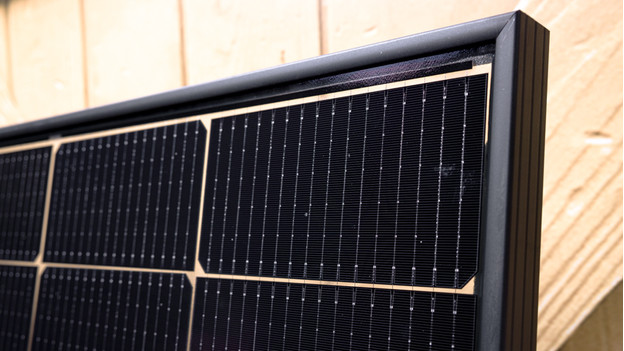
How does a solar panel work?
Solar cells and electrons
A solar panel consists of solar cells. These cells have 2 layers of silicon, which have a dividing layer between them. There are more electrons in 1 layer of silicon, so it's positively charged. The other layer is negatively charged because it has less electrons. As soon as the sun shines on the panel, the electrons move form the positive layer to the negative layer. This movement creates an electric field, which creates direct current.
Fingers and busbars

When you look at a solar panel up close, you can see many lines on it. These lines are divided into 2 kinds, narrow and wide ones. The narrow lines (fingers) are connected to each other by the wide lines (busbars). The generated energy runs to a central point via these lines. From here, the energy of the panel goes to the inverter via a cable. The inverter turns the generated energy into an alternating current that you can use for things in your home that need electricity.
Different layers

A solar panel has many different layers. The top layers is a kind of plastic foil with fingers and busbars. The plastic foil protects the solar cells from shocks, bumps, and moisture. There's a glass plate with a frame over the foil. The frame keeps all the pieces together. The back plate protects the back of the solar panel.

